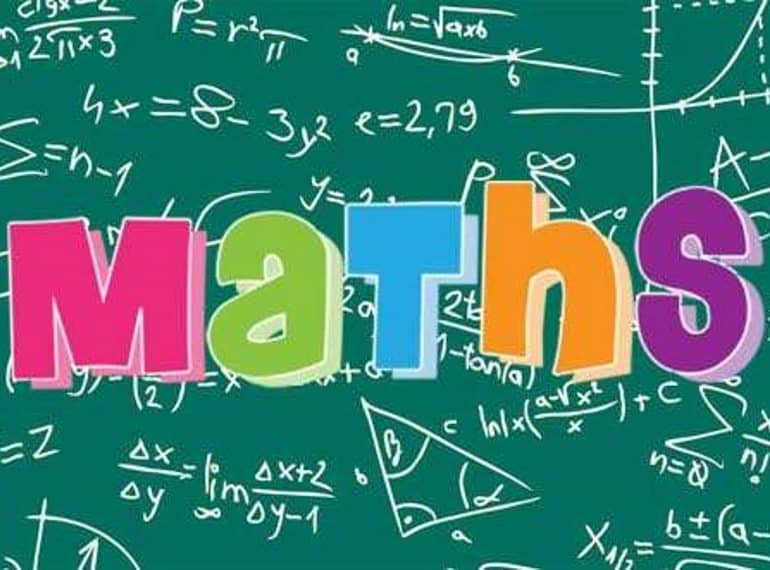
Three QE boys scored 135 out of 135 in the 2020 Junior Mathematical Challenge, as the School recorded an exceptional number of strong performances in the annual competition.
Hisham Khan, now of Year 8, and current Year 9 boys Jothusan Jeevakaran and Saim Kahn were among 117 QE pupils to be awarded gold certificates in the national challenge, which this year was held online only and entered by pupils from home.
All 384 boys in Year 7 and 8 were invited to take part earlier in the year, and 318 of them – 83% – won either a gold, silver or bronze certificate, even though such certificates are given nationally to only the top 40% of entrants, to whom gold, silver and bronze are awarded in the ratio 1:2:3.
Assistant Head of Mathematics Wendy Fung said: “It was another very good performance this year, showing the strength in depth of Mathematics in the lower years at the School. My congratulations go especially to Hisham, Jothusan and Saim for their outstanding achievement.
“Much of the success achieved by our youngest boys in the challenge stems from the excellent guidance and help given to Year 8 by the Years 10 and 11 mentors at our Élite Maths (Junior) group: we are very grateful to them for giving up their time and passing on their wisdom.”
To win gold certificates this year, entrants had to score more than 102 points; for silver, the threshold was 86, and for bronze, 70.
The annual event is run by the UK Mathematics Trust. The usual follow-on rounds for successful entrants – the Junior Olympiad and Junior Kangaroo – are not taking place this year.
Here are two sample questions from this year’s Junior Mathematical Challenge – answers and explanations below.
1. The mean of four positive integers is 5. The median of the four integers is 6. What is the mean of the largest and smallest of the integers?
A 3 B 4 C 5 D 6 E 8
2. A group of 42 children all play tennis or football, or both sports. The same number play tennis as play just football. Twice as many play both tennis and football as play just tennis. How many of the children play football?
A 7 B 14 C 21 D 28 E 35
Solutions & explanations
1. The mean of four positive integers is 5. Therefore. the sum of the four integers is 4 × 5 = 20. The median of the integers is the mean of the two middle integers. Since this median is 6, the sum of the two middle integers is 2 × 6 = 12. Hence the sum of the smallest and largest of the four integers is 20 − 12 = 8. Therefore, the mean of the largest and smallest of the integers is 8 ÷ 2 = 4.
2. Let the number of children who play only football be f, the number of children who play only tennis be t and the number of children who play both sports be b. Since there are 42 children, f + t + b = 42. Also, since the number of children who play tennis is equal to the number of children who play only football, t + b = f . Therefore f + f = 42. So f = 21 and t + b = 21. Finally, twice as many play both tennis and football as play just tennis. Therefore b = 2t. Substituting for b, gives t + 2t = 21. Hence t = 7. Therefore, the number of children who play football is 42 − t = 42 − 7 = 35.
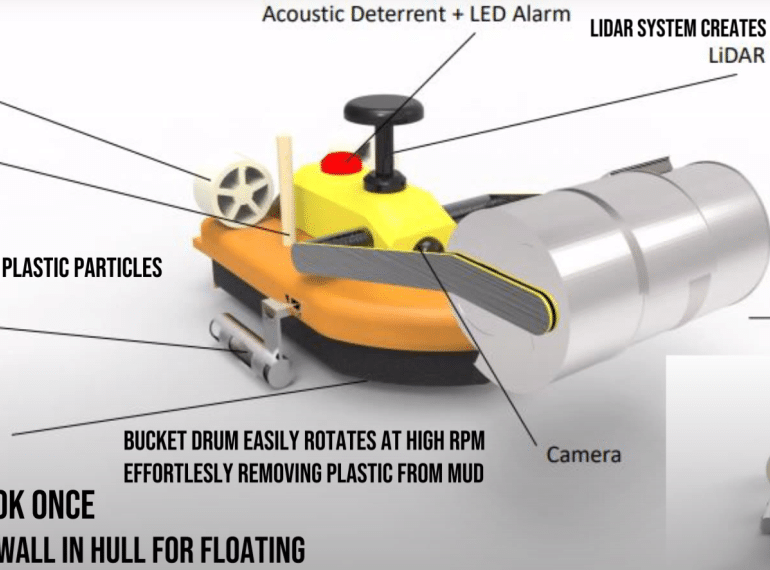
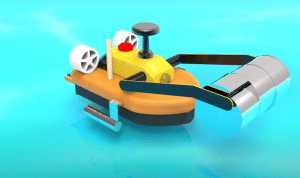 The Prata Neptunia team combined their skills in Technology, Mathematics and Chemistry and also produced a slick video presentation to promote their design for an autonomous hovercraft robot.
The Prata Neptunia team combined their skills in Technology, Mathematics and Chemistry and also produced a slick video presentation to promote their design for an autonomous hovercraft robot.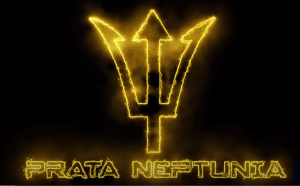 The team learned project-management skills in order to optimise their time effectively, from the use of Gantt charts to task delegation. They designed prototypes at home, building and testing parts, and investigating processes to remove microplastics in order to determine the feasibility of their design.
The team learned project-management skills in order to optimise their time effectively, from the use of Gantt charts to task delegation. They designed prototypes at home, building and testing parts, and investigating processes to remove microplastics in order to determine the feasibility of their design. The Ocean team, Jashwanth Parimi, Utkarsh Bhamidimarri and Siddarth Jana, also started their project relatively late and had only about a month to complete it.
The Ocean team, Jashwanth Parimi, Utkarsh Bhamidimarri and Siddarth Jana, also started their project relatively late and had only about a month to complete it.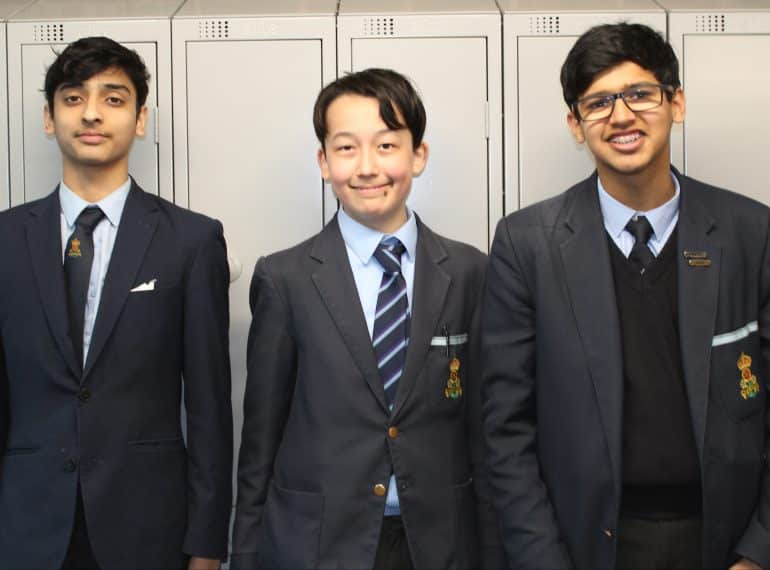
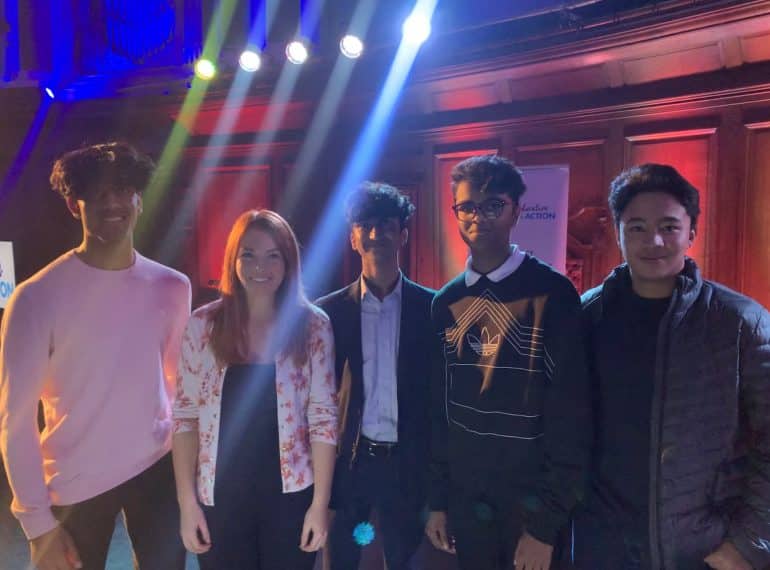
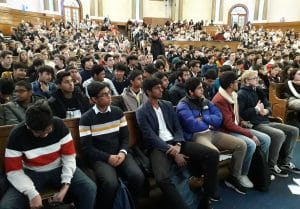 Assistant Head of Mathematics Wendy Fung said: “Each lecture was inspiring in its own way and has encouraged the boys to delve deeper into the topics they found most engaging. These lectures are a very good way of introducing branches of Mathematics and ways of mathematical thinking which are not covered as part of the A-level syllabus, and of showing the range of applications to which the subject can be applied.”
Assistant Head of Mathematics Wendy Fung said: “Each lecture was inspiring in its own way and has encouraged the boys to delve deeper into the topics they found most engaging. These lectures are a very good way of introducing branches of Mathematics and ways of mathematical thinking which are not covered as part of the A-level syllabus, and of showing the range of applications to which the subject can be applied.”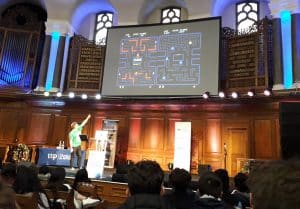 Cambridge mathematician Matthew Scroggs’ lecture on the Mathematics of Video Games impressed Charan Kumararuban, who said: “I was particularly amazed by his demonstration of using Mathematics in order to predict the shortest possible routes to complete a game of Pacman in the shortest possible time.”
Cambridge mathematician Matthew Scroggs’ lecture on the Mathematics of Video Games impressed Charan Kumararuban, who said: “I was particularly amazed by his demonstration of using Mathematics in order to predict the shortest possible routes to complete a game of Pacman in the shortest possible time.”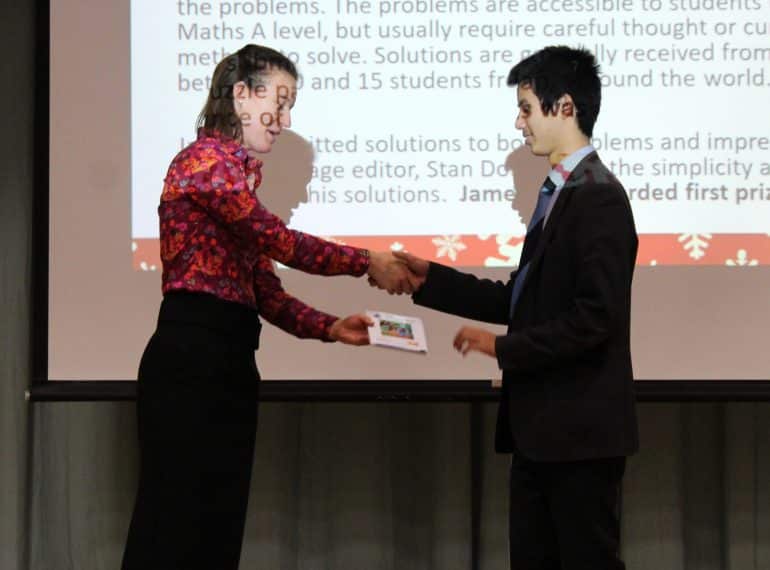
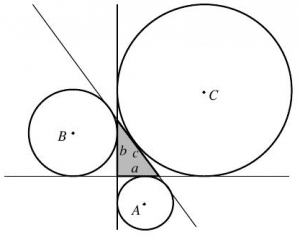 e solutions […] were especially good in terms of clarity and a well-expressed generalisation.”
e solutions […] were especially good in terms of clarity and a well-expressed generalisation.”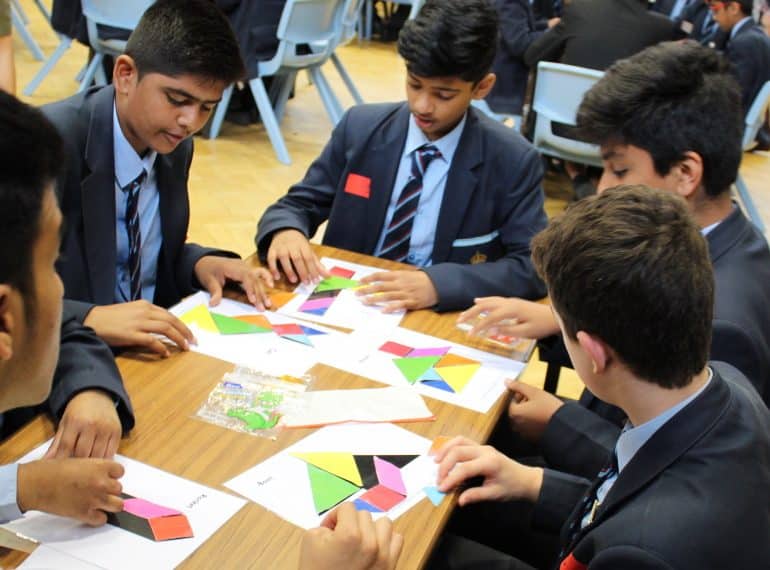
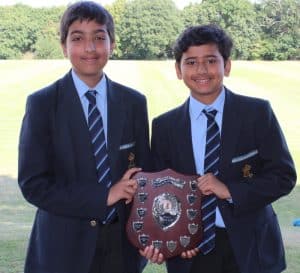 es, some of which are more familiar problem-solving (such as the round entitled A Question of Maths), while others major on the practical (such as tangrams, which involve putting together seven flat shapes to create a specified shape).
es, some of which are more familiar problem-solving (such as the round entitled A Question of Maths), while others major on the practical (such as tangrams, which involve putting together seven flat shapes to create a specified shape).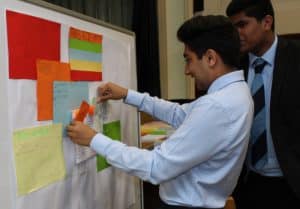 “From electricity to football, Maths is all around us. Winning the Maths Fair is an unforgettable achievement,” said Haris Shahid from Pearce.
“From electricity to football, Maths is all around us. Winning the Maths Fair is an unforgettable achievement,” said Haris Shahid from Pearce.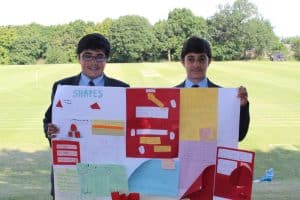 All six Houses were also required to create a poster entitled What is Mathematics? Each of the multiple teams within each house had to create a part of the poster. They were asked to prepare in advance by coordinating the different sections so that their poster would encompass the many facets of Mathematics.
All six Houses were also required to create a poster entitled What is Mathematics? Each of the multiple teams within each house had to create a part of the poster. They were asked to prepare in advance by coordinating the different sections so that their poster would encompass the many facets of Mathematics.